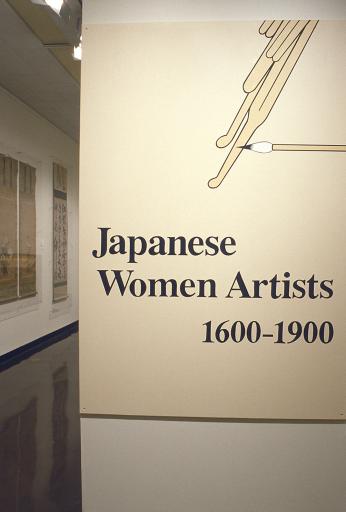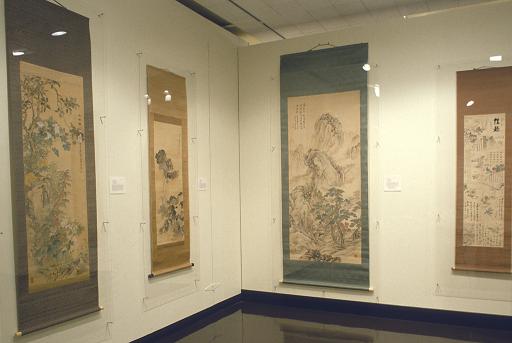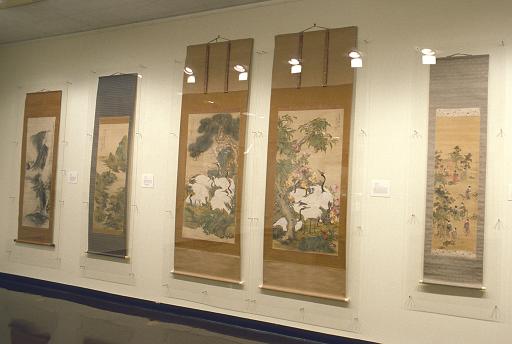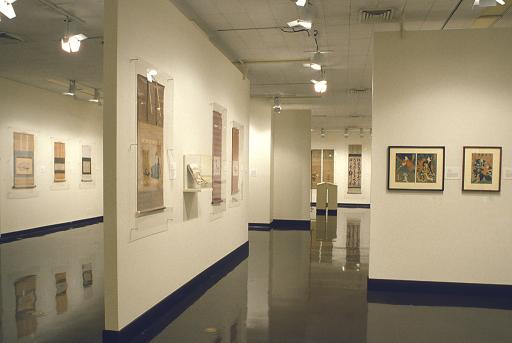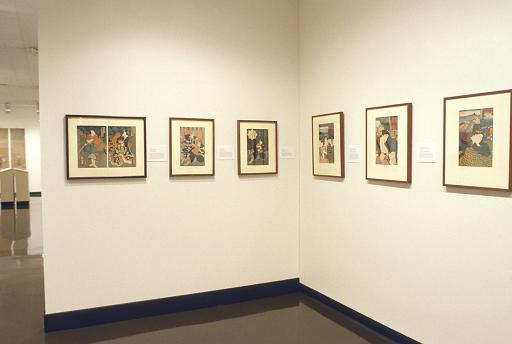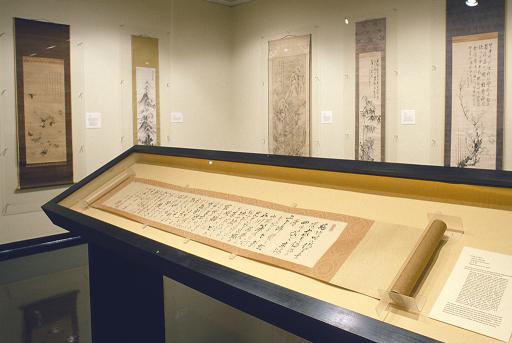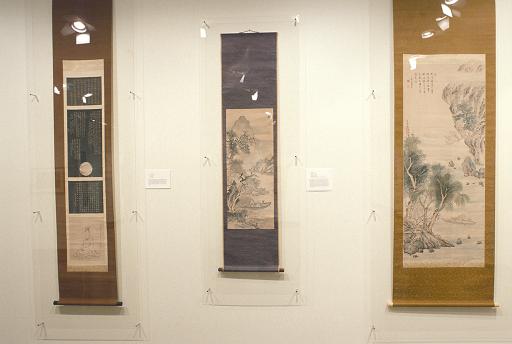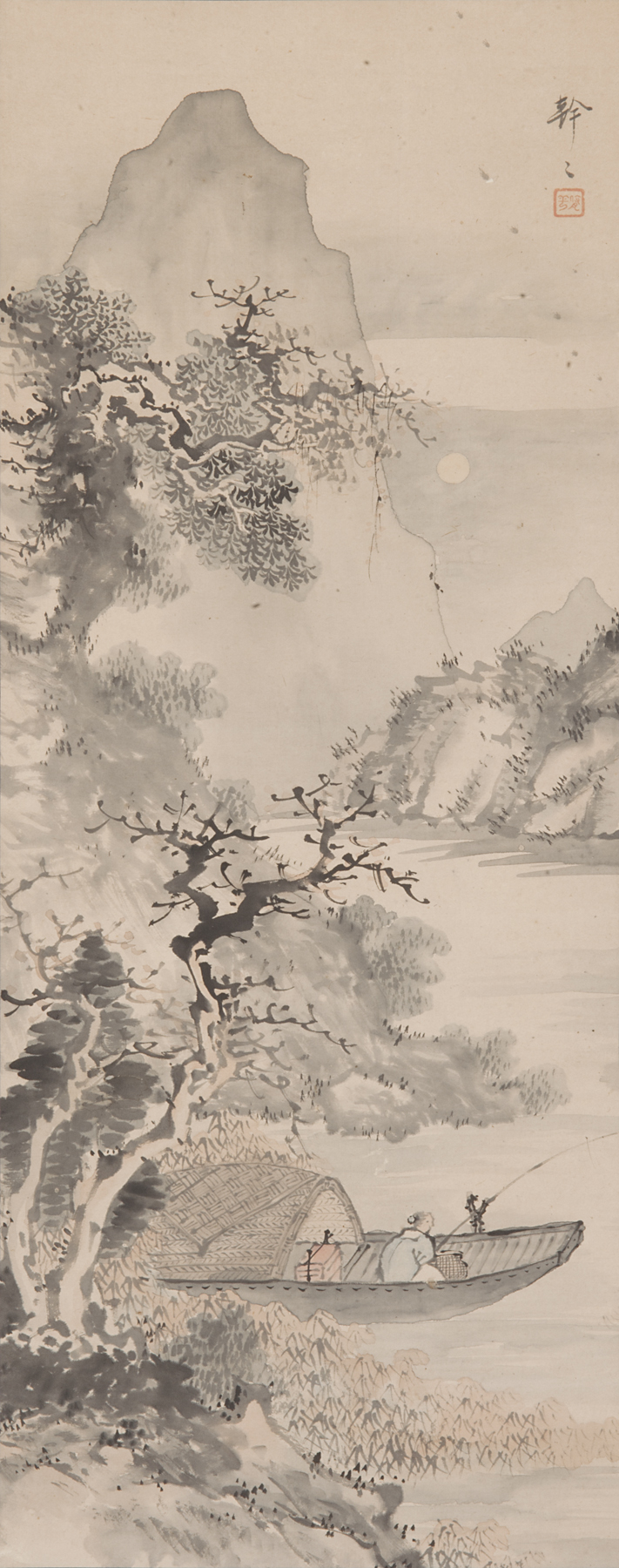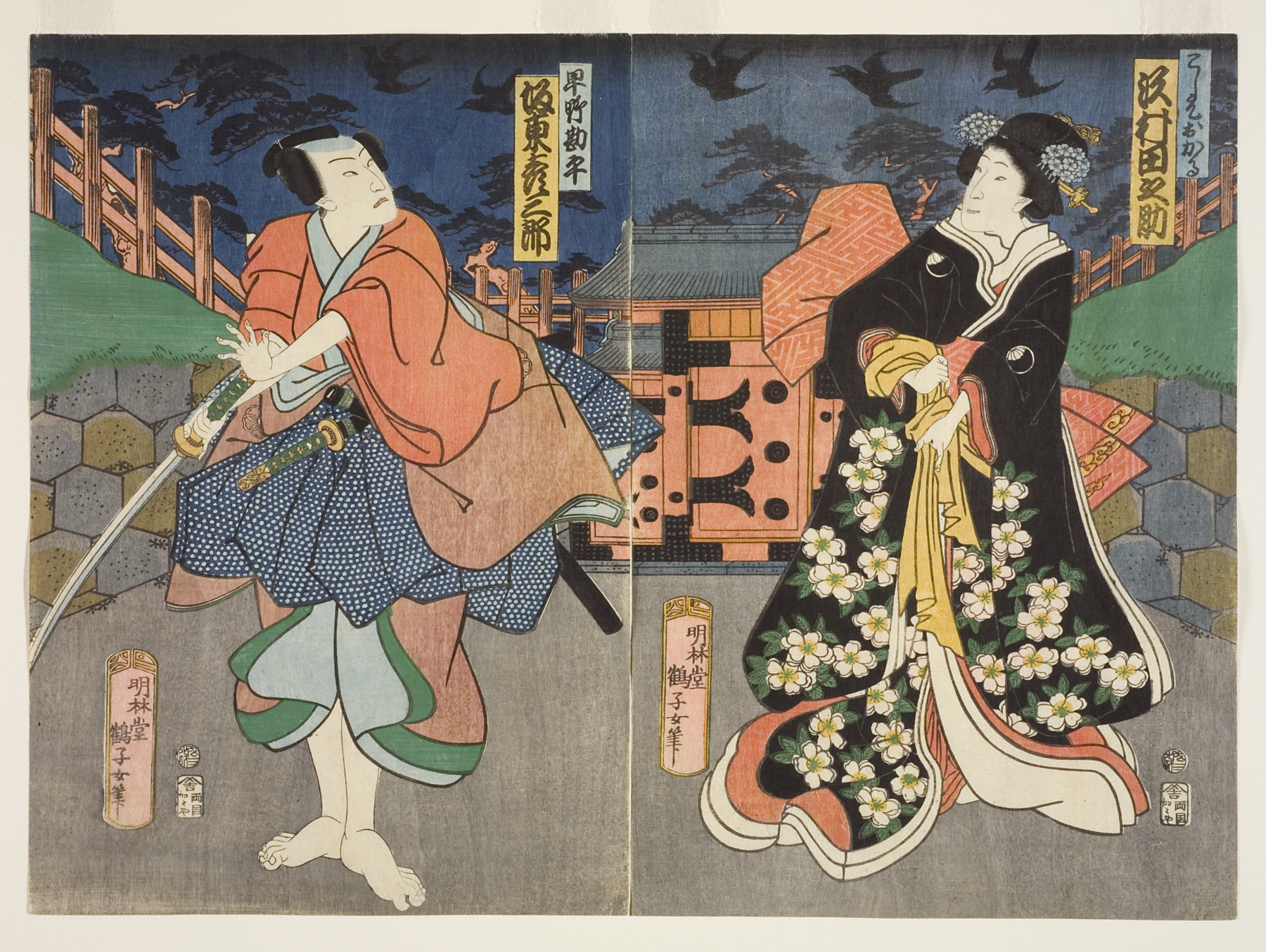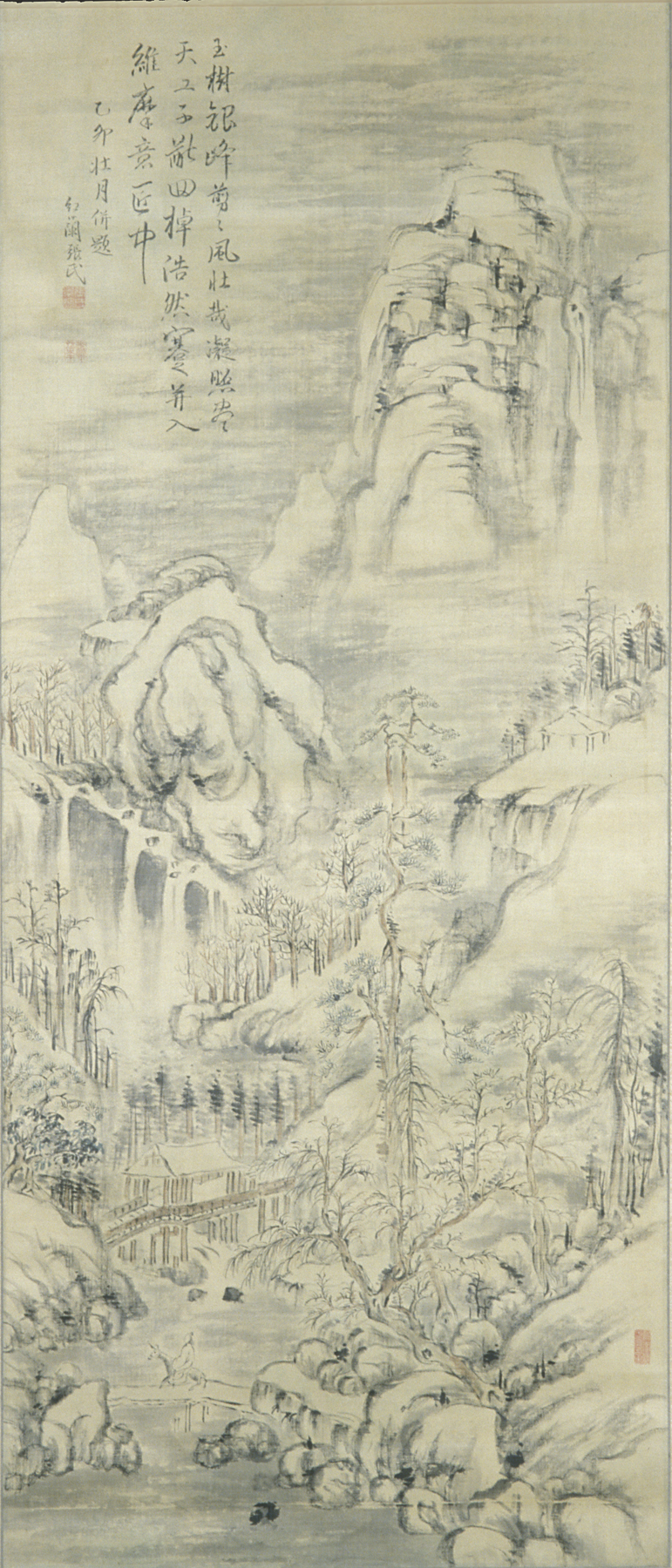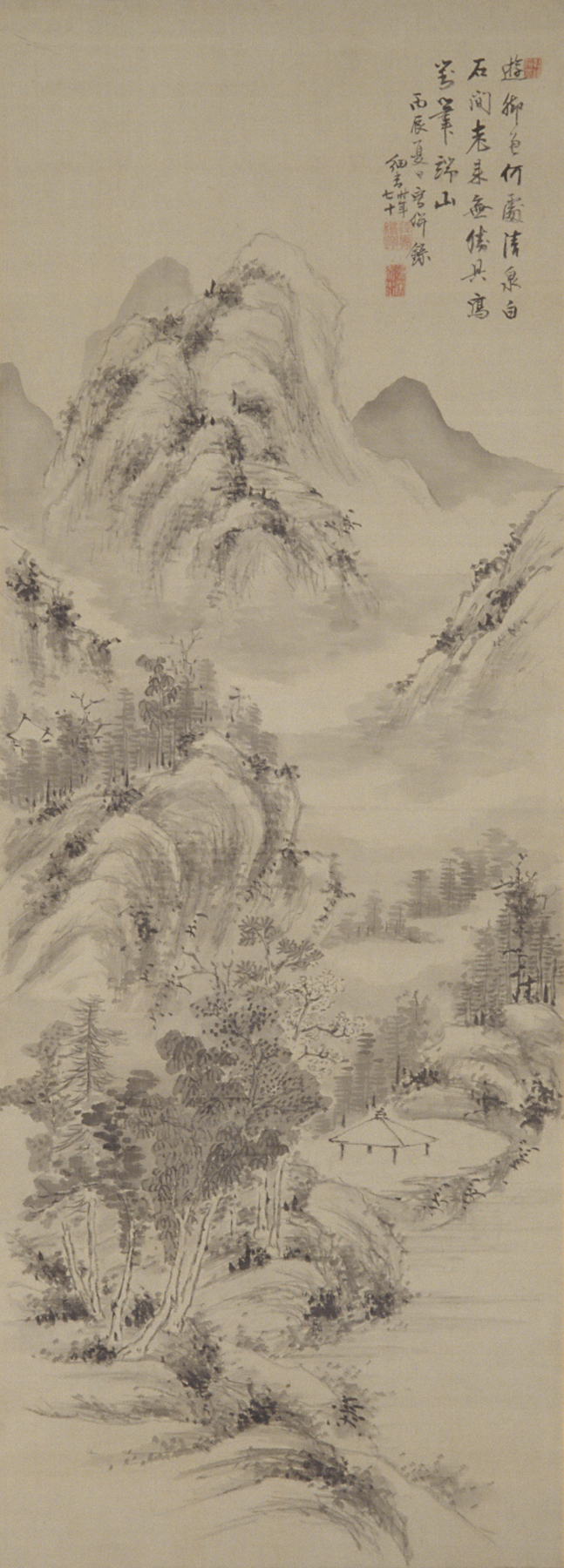Japanese Women Artists, 1600-1900
Exhibition Overview
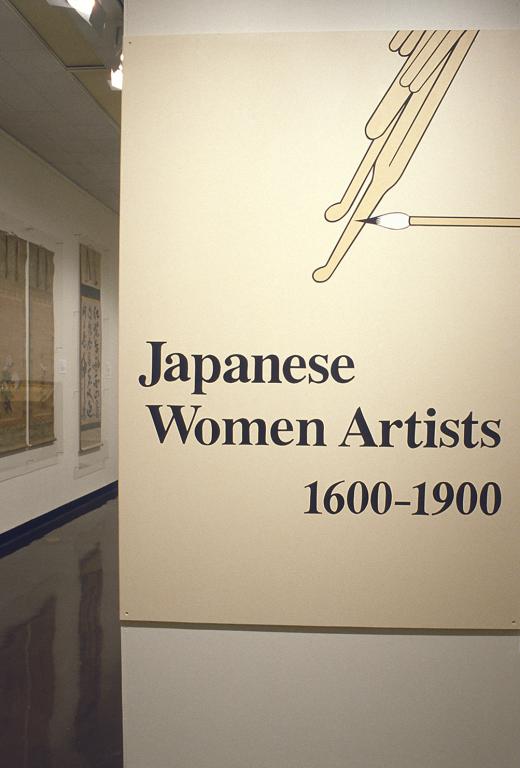
Nearly one-hundred works, primarily paintings, are in this exhibition of women artists who worked during a period that saw great changes take place in Japanese society. Twenty-eight artists are represented, including Chiyo, Ike Gyokuran, Otagaki Rengetsu, and Noguchi Shohin. A dramatic flowering of women artists occurred during the Edo period; there was a vast expansion of the educational system and a corresponding broadening range of opportunities for women. One of the goals of the exhibition and catalogue by Patricia Fister, curator of Oriental art, is to lead to an understanding of women artists of these three hundred years in relation to the political, social, and economic conditions in Japan. Liza Dalby, author of Geisha, will speak at the opening at 8 p.m. on Saturday, April 2. The fully illustrated catalogue, published by the Spencer Museum, will be available from the Publications department, or from Harper & Rowe, this spring. The exhibition will be seen at the Honolulu Academy of Art September 21-October 30, 1988.
